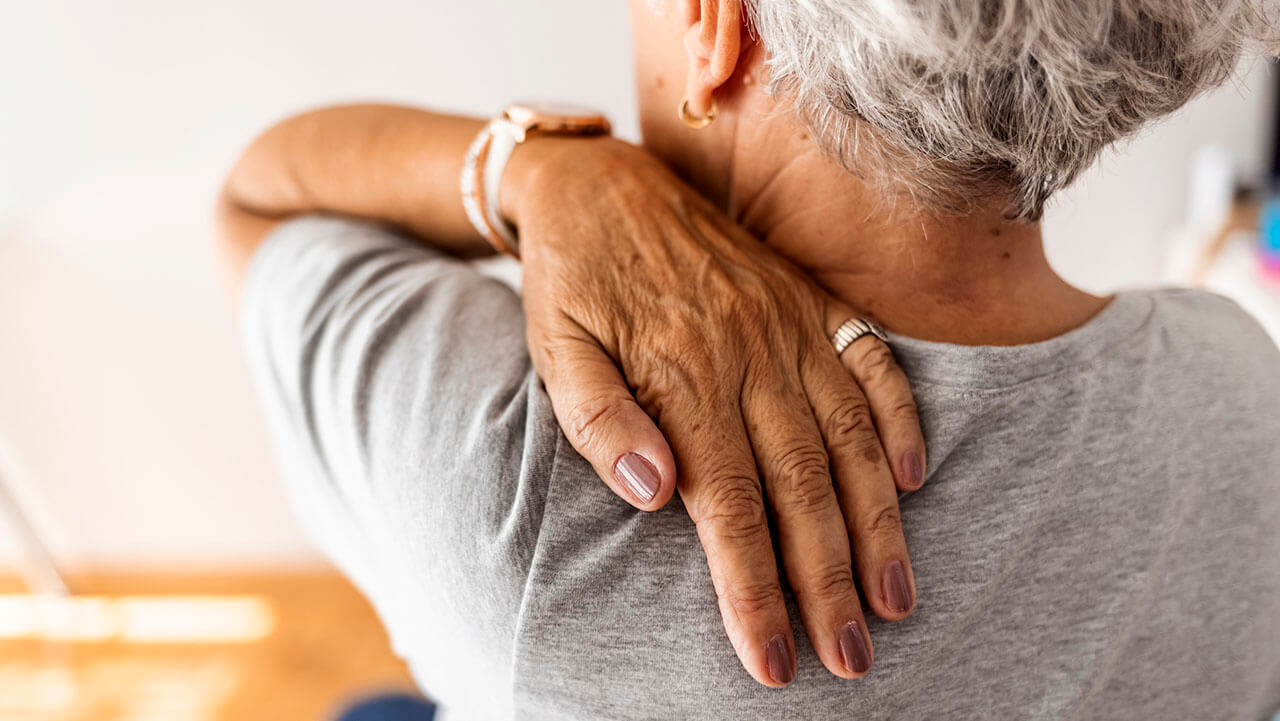Back and neck pain due to arthritis, facet joint arthropathy


Back pain is one of the most common medical conditions for a person to seek medical help. In fact, facet joint arthropathy is just one cause of neck and back pain and is common in older adults.
Facet joints are located along the back of the spine and allow for bending, twisting and alignment of the spine. In a healthy spine, the spinal disc and the facet joints support each other for healthy and safe movement.
Facet joint arthropathy is a painful arthritic condition of the facet joints where the cartilage between the facet joints breaks down or gets damaged, causing the cartilage and fluid to become thinner or damaged through wear and tear. As a result, the bones in the joints may not move as they should, causing swelling, pain and/or stiffness in the neck (cervical spine) or lower back (lumbar spine).
Facet joint arthropathy is a degenerative disc disease that can occur due to:
Lower back or neck pain is often the most common symptoms one may feel. The pain tends to get worse when bending or leaning backward, twisting the body, standing or lifting objects and the pain tends to be specific to one part of the spine. Stiff neck or back and the inability to move part of the back or neck is also a common symptom.
The provider will gather detailed medical history at the appointment, such as the experienced symptoms, how long the symptoms have been occurring, any factors that worsen or improve the symptoms, prior treatments and additional medical questions. The provider will then perform a physical examination to assess the pain, range of motion, reflexes and strength of the back, neck and extremities. Based on the information, further evaluation with imaging studies may be necessary for proper diagnosis. Such image tests may include X-rays, CT scan or MRI.
Facet joint arthropathy is treated in several ways, from conservative measures to surgery. Conservative measures include:
If the pain does not improve with these treatments, joint injections or procedures may be the next step. Pain caused by the facet joints rarely needs to be treated with surgery.
Although it’s not always possible to prevent facet joint arthropathy, there are ways to reduce your risk of facet joint arthropathy.
Facet joints are located along the back of the spine and allow for bending, twisting and alignment of the spine. In a healthy spine, the spinal disc and the facet joints support each other for healthy and safe movement.
Facet joint arthropathy is a painful arthritic condition of the facet joints where the cartilage between the facet joints breaks down or gets damaged, causing the cartilage and fluid to become thinner or damaged through wear and tear. As a result, the bones in the joints may not move as they should, causing swelling, pain and/or stiffness in the neck (cervical spine) or lower back (lumbar spine).
Causes of facet arthropathy
Facet joint arthropathy is a degenerative disc disease that can occur due to:
- Age due to normal wear and tear through the years.
- Heredity may play a role in degeneration of the disc, which can lead to facet arthropathy.
- Obesity due to added stress on the spine, typically lower/lumbar spine.
- Poor body mechanics such as heavy lifting, improper/poor posture, repetitive overuse.
- Accidents or back or neck injury such as car accident, sports injury or a fall.
Symptoms of facet arthropathy
Lower back or neck pain is often the most common symptoms one may feel. The pain tends to get worse when bending or leaning backward, twisting the body, standing or lifting objects and the pain tends to be specific to one part of the spine. Stiff neck or back and the inability to move part of the back or neck is also a common symptom.
Diagnosing facet arthropathy
The provider will gather detailed medical history at the appointment, such as the experienced symptoms, how long the symptoms have been occurring, any factors that worsen or improve the symptoms, prior treatments and additional medical questions. The provider will then perform a physical examination to assess the pain, range of motion, reflexes and strength of the back, neck and extremities. Based on the information, further evaluation with imaging studies may be necessary for proper diagnosis. Such image tests may include X-rays, CT scan or MRI.Treatment options for facet joint arthropathy
Unfortunately, there is no cure for facet joints once they have been damaged. However, there are many treatment options focusing on relieving pain and stiffness to significantly improve a person’s quality of life.Facet joint arthropathy is treated in several ways, from conservative measures to surgery. Conservative measures include:
- Medications such as NSAIDS and/or acetaminophen or oral steroids.
- Physical therapy and exercises to regain strength and movement and correct body mechanics.
- Avoidance of such motions that cause pain, such as twisting and lifting.
- Weight loss may help decrease the pain by removing the stress on the joints.
- Chiropractic care.
- Dry needling to relax the surrounding back or neck muscles.
If the pain does not improve with these treatments, joint injections or procedures may be the next step. Pain caused by the facet joints rarely needs to be treated with surgery.
Preventing facet joint arthropathy
Although it’s not always possible to prevent facet joint arthropathy, there are ways to reduce your risk of facet joint arthropathy.
- Maintain good sitting, standing and walking posture and keep the back straight.
- Exercise regularly with low impact activity, such as walking or swimming.
- Maintain a healthy body weight.
- Quit tobacco products if you use them.
- Minimize the chance of injuries by using protective sports gear, using proper lifting techniques and avoiding lifting of heavy objects.
- Provide your body with good nutrients with a balanced diet of fruits, vegetables, whole grain and lean protein. Supplements such as calcium or vitamin D may also help.



